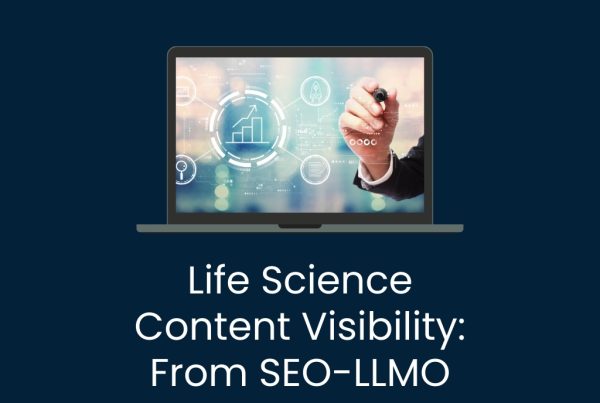How to Win Earned Media Coverage in the Life Sciences
You’ve developed an innovative product, platform, or technology, and now you’re ready to share it with the world. Earned coverage can validate your offering, build brand trust, attract researchers, and open doors to strategic opportunities.
However, in today’s multi-channel world, earned coverage extends far beyond being featured in articles. Think broader: getting your subject matter experts (SMEs) or customers recognized through interviews, podcasts, webinars, panels, and expert commentary. These opportunities add depth to your brand story and help build influence and visibility where your audience consumes information.
Securing this kind of coverage means understanding what editors—and content producers—are looking for, how to pitch strategically, and how to deliver value that serves their readers or listeners, not just your message.
We spoke with editors and science writers across the industry to find out what gets their attention—and what doesn’t. Here’s what they had to say.
🎯 Step 1: Understand What Science Editors Want
Science editors and writers don’t exist to promote your product—they exist to serve their readers: bench scientists, principal investigators, biotech founders, and industry decision-makers.
What they do want are stories that:
- Offer scientific insight
- Illustrate broader trends in research or commercialization
- Show how real scientists are solving real problems
If you recently published a peer-reviewed paper highlighting your product’s role in a novel method or breakthrough, that’s newsworthy. Likewise, if a customer lab used your product in a high-impact study or was able to solve a long-standing problem, that real-world application could make your pitch much stronger.
“The most impactful stories are those that address real problems or introduce technologies with clear potential in research applications,” notes Ben Atha, Editor at SEQanswers.
“Researchers are incredibly busy, so when they take time to read, the content must deliver real value.”
“We value technologies that help scientists do their jobs more efficiently and economically,” adds John Sterling, Editor in Chief at GEN. “The key is showing how the tool is truly different and allows researchers to work better than before.”
💡Pro Tip: Always ask: How does this help a reader learn something new, solve a challenge, or spark curiosity? If you can answer that—and offer an expert who can say it with authority—you’re already ahead of most.
🎙️ Step 2: Expand Beyond Articles—Pitch Podcasts and Webinars Too
Today’s editors and content producers aren’t just publishing articles—they’re building multi-format platforms that include conferences, podcasts, video interviews, webinars, and virtual panels. These are prime opportunities to spotlight your internal experts or customer KOLs in an engaging, repeatable, and highly shareable format.
When pitching, suggest your SME or end-user as a speaker for a conference, podcast episode or webinar on a timely topic. Help the editor envision how that expert can contribute to a broader conversation, not just promote your product. Offer talking points, recent studies, or a compelling personal narrative that connects science to story.
“When evaluating potential speakers, we look for individuals who can offer unique insights and engage our audience with compelling narratives”, explains Tanuja Koppal, PhD, Conference Producer and President Biomics Consulting.
“A well-crafted pitch that clearly outlines the speaker’s expertise, highlights a timely or emerging topic, and includes past speaking engagements or links to recorded talks significantly increases the chances of selection. It gives us confidence that the speaker will both deliver and connect with the audience.”
Editors often appreciate well-spoken guests who can add depth to technical discussions, provide unique case study insights, or offer a new angle on an ongoing trend, especially if they’ve already been active in the scientific community.
💡Pro Tip: When pitching your SME or KOL, include where they’ve already spoken—whether it’s at respected conferences, webinars, or on other media platforms. Familiarity builds credibility. Editors and producers are more likely to say yes when they see that your expert has already contributed to relevant discussions. Also, tailor your pitch to the specific media brand or event organizer’s focus. Knowing their audience—and showing that your expert fits—can make all the difference.
🧠 Sidebar: Why KOLs and AI Matter More Than Ever in Earned Media
As AI transforms how scientific content is discovered, evaluated, and surfaced—especially via tools like ChatGPT, Perplexity, Google’s Gemini, and other integrated AI agents—the role of human authority is becoming even more critical.
In a world where algorithms summarize insights and prioritize top-cited or most-quoted voices, featuring known Key Opinion Leaders (KOLs) or respected SMEs in your earned media strategy isn’t just smart—it’s strategic amplification.
By leveraging well-published KOLs or influential customer voices:
- You build algorithmic relevance, increasing chances of content being recommended or quoted.
- You enhance trust and credibility, especially in an environment flooded with synthetic or generalized AI outputs.
- You differentiate your narrative with real human insight—the kind AI still struggles to replicate.
💡Pro Tip: In your pitches, highlight if your SME or customer has a strong citation history, social following, or is frequently quoted in the literature. These signals not only appeal to editors but may also boost downstream discoverability via AI systems.
📊Step 3: Craft a Science-Driven (and Visual) Pitch
Strong pitches go beyond features. They highlight the scientific problem being addressed, back it with real-world use, and bring it to life with supporting materials.
This could include peer-reviewed research, application notes, performance data, or lab testimonials using your product. Even better? Pair it with visuals. Editors are likelier to engage with a pitch that helps them quickly understand the story and envision how it could play out in front of their audience.
“Visuals are great for attracting the reader’s attention – provided they’re not overly complicated,” says Emma Mason, Director of Cambridge Technical Content, Ltd. “The best types of visuals are those that clearly show how a product or service addresses a common problem, including a concise legend with a link to where the reader can find out more.”
According to the 2025 Cision State of the Media Report, nearly 1 in 5 journalists (20%) are more likely to pursue a pitch that includes multimedia elements, and another 36% say it depends on the type. What gets attention?
- 70% prioritize images
- 30% want data visualizations
- 25% value videos
- 25% respond to polls or surveys¹
💡Pro Tip: Support your pitch with visuals—product photos, charts, videos, or infographics. They boost clarity, credibility, and editor engagement.
🧑💻 Step 4: Pitch the Right Editor (or Writer) and Align with Their Audience
Sending a blanket pitch to every editor at a publication—or worse, to a list of unrelated contacts—is one of the fastest ways to be ignored. Editors and freelance writers often have specific beats or topic areas they cover, and a pitch that doesn’t align with their focus will quickly be passed over.
Before reaching out, take the time to read a few of their recent stories, familiarize yourself with the types of technologies or research areas they cover, and tailor your pitch accordingly. Mention a related article they’ve written, explain why your story fits their audience, and avoid vague or generic language.
And it’s not just about the editor—it’s about the readers. Every publication serves a specific segment of the life sciences. Is it written for bench scientists, facility managers, pharma execs, or a technical niche like genomics or immuno-oncology? You need to pitch with that audience in mind and ask yourself: will this resonate with them, and is it appropriate for this channel?
“We’re all busy, and I understand that customizing pitches takes effort,” says Tamlyn Oliver, Managing Editor at Biocompare.
“But sending pitches that are completely unrelated to our coverage area is a waste of everyone’s time. I can tell when a pitch has been crafted with the topic and our readers in mind—and those are the ones that stand out, get my attention, and often lead to follow-up.”
“A good pitch is timely, appropriate for our audience, and clearly defines what’s unique about the technology,” adds John Sterling, Editor in Chief at GEN. “We want to know how it fits into the workflow and why it matters now.”
💡Pro Tip: Research the editor, study the publication’s audience, and tailor your pitch to both. The more precisely your story fits their coverage and readership, the more likely it is to get picked up.
To stay organized and improve your chances, create a simple internal tracking document outlining each editor or writer, their beat, audience focus, and the types of stories they typically cover. Then plug in your potential topics and match them accordingly.
🤝 Step 5: Make It Easy (and Valuable) for Editors
Once you’ve piqued interest, be ready to act quickly. Editors work under deadlines. Clear communication and easy access to sources are essential.
This means providing a well-prepared spokesperson, high-resolution images or data visualizations, supporting documents such as application notes or research summaries, and being available to answer questions promptly.
“Having a spokesperson lined up makes a big difference,” says Ben Atha. “It avoids delays when identifying who can speak to the story.”
“Companies can make my job easier by providing clear, relevant information up front,” notes Tamlyn Oliver. “That includes press releases, supporting content, expert availability, and quick responses to follow-up questions.”
💡Pro Tip: Identify a single, knowledgeable contact for media follow-up. Be fast, be clear, and be available.
✨ Bonus: Why Working with a PR Insider Makes a Difference
You can pitch editors yourself—and in some cases, you should. But when the stakes are high, timelines are tight, or the story is complex, working with a PR partner who understands the science and the media can make all the difference.
“In some ways, working with a PR rep is easier because they help keep things on track,” says Emma Mason. “But they need to know the subject well. If they can’t speak to the science, it slows things down.”
At Aurora Biomarketing, we’ve spent decades working inside the industry’s most trusted science media brands. We know how editors think, what readers care about, and how to position your story to rise above the noise.
We don’t rely on volume—we rely on precision. And we understand that credibility is earned, not assumed.
💡Pro Tip: Editors respond to people they trust and pitches that speak their language. That’s what a science-savvy media team brings to the table.
Final Thought
Getting covered in the life sciences media isn’t about pushing your message—it’s about helping editors tell a story that matters to their audience.
“The most impactful stories are the ones that help researchers do better science,” says Ben Atha.
And as John Sterling puts it:
“Show us how your technology is truly different—and how it helps scientists work better than before.”
If your pitch can do that—whether in print, online, in a podcast, or on a panel—you’re not just chasing coverage. You’re building credibility, trust, and long-term visibility in the scientific community.



